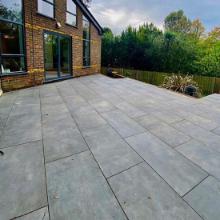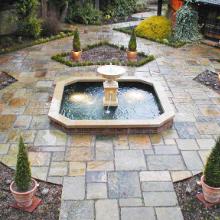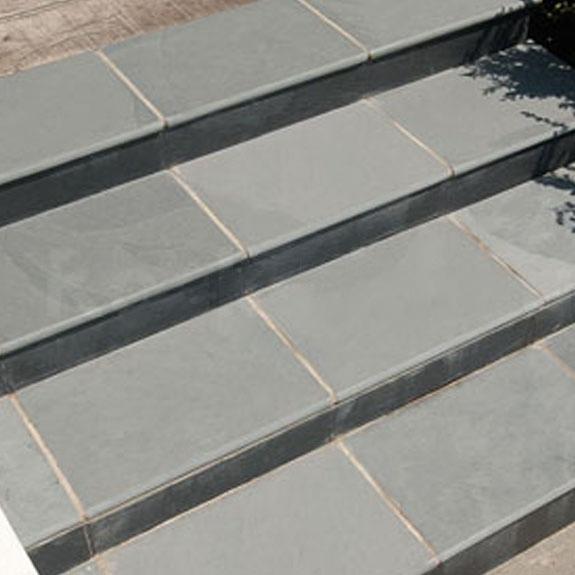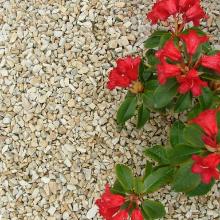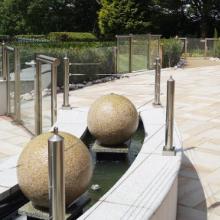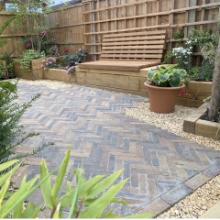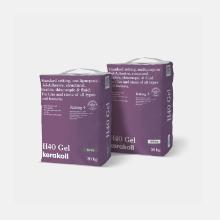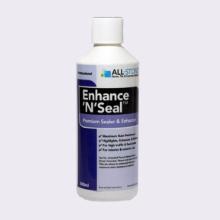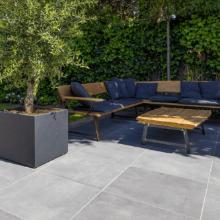Frost resistance is one of the most important performance factors for any outdoor paving material, particularly in climates such as the UK where freezing and thawing cycles occur repeatedly through winter. Both porcelain and natural stone can perform exceptionally well outdoors, but their resistance to frost depends largely on their porosity, structure, and mechanical strength.
At the heart of frost resistance is porosity — the volume of open space within the material.
Water enters these pores, and when it freezes, it expands by around 9%. If the pores are large or interconnected (known as open porosity), this expansion exerts pressure within the material, eventually leading to microcracking or surface delamination. In contrast, materials with closed or very fine pores limit the amount of water that can enter, and therefore resist frost damage.
Porcelain paving has a water absorption rate of less than 0.5%, meaning it is virtually impervious to frost. Its fine, vitrified structure has almost no open pores, preventing water from penetrating deeply enough to cause any internal stress. As a result, porcelain is classified as frost-proof under European Standard EN 14411, which sets the benchmark for exterior-grade tiles.
Natural stone, however, varies widely. Dense stones such as granite, basalt, or porphyry have low open porosity and excellent frost resistance. Softer stones like limestone or sandstone may absorb more water and need proper bedding and drainage to prevent frost damage. Even within a single type of stone, porosity can differ depending on mineral composition and quarry origin.
Frost resistance is often tested through freeze–thaw cycling, where samples are repeatedly soaked in water and frozen at sub-zero temperatures. After multiple cycles, they are examined for cracking, flaking, or strength loss. In the UK and Europe, this is covered by EN 12371 for natural stone and EN ISO 10545-12 for porcelain tiles.
A paving material that withstands 100 or more cycles without deterioration is considered suitable for exterior use. High-strength, low-porosity materials like porcelain or dense granites easily exceed this threshold.
In simple terms, frost resistance depends on how much water a material can absorb and how well it withstands the pressure of freezing. Porcelain achieves this through its closed, vitrified structure; dense stone through natural compactness. Both can perform exceptionally well — provided they are installed on a sound, well-drained base.
